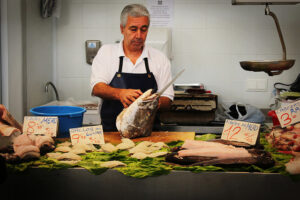Spain boasts a vibrant food culture filled with small dishes packed with flavor. Whether you’re sitting at a lively bar or exploring local markets, you’ll find two popular styles of eating: tapas and pintxos. These tiny bites aren’t just about satisfying hunger—they tell stories about regional traditions, craftsmanship, and social life. Understanding their differences helps you truly enjoy the authentic spirit of Spanish cuisine. If you’ve ever wondered about pintxos vs tapas, this guide will give you a flavorful introduction.
Understanding the Cultural Context of Tapas and Pintxos
What Are Tapas?
Tapas are small dishes often served with drinks, especially in the south of Spain. Usually, ordering a drink in a small tavern means you’ll get a choice of complimentary snack. That’s why you’ll hear locals talk about “tapas,” which means “cover” or “lid.” These bites can be anything from olives and cheese to hot dishes like potatoes with chorizo.
In many parts of southern Spain, it’s common to visit multiple bars and share different tapas. This tradition connects friends and family over a relaxed pace of eating. Tapas encourage conversation and socializing, creating a lively, communal vibe.
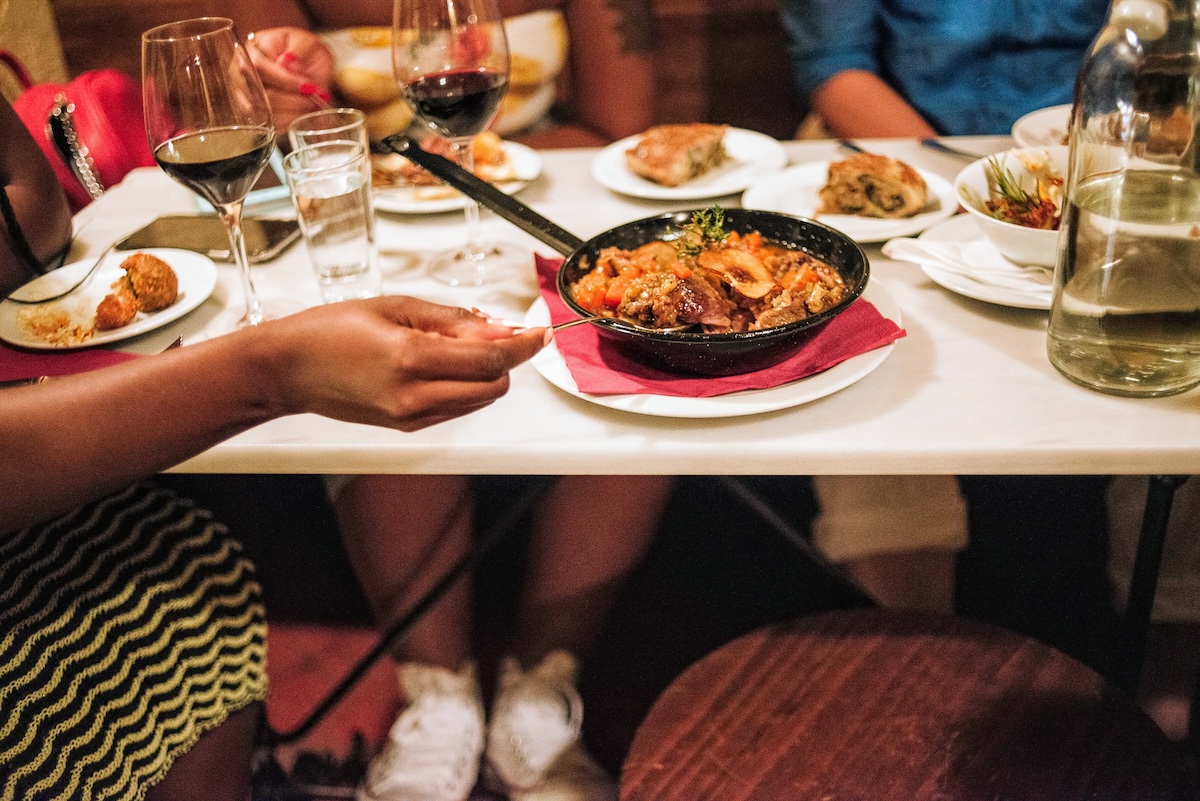
What Are Pintxos?
Pintxos come from northern Spain, especially Basque Country. Unlike tapas, pintxos are usually individual bites served on small slices of bread, often decorated with a single ingredient or combination. They’re held together with a toothpick or skewer, which makes them easy to pick up and eat.
Pintxos are not usually free with a drink, but their presentation and quality make them worth paying for. These bites are carefully crafted, often with gourmet ingredients and creative touches. As a result, pinchos exemplify modern Spanish gastronomy’s finesse and artistry. This is where the pintxos vs tapas comparison becomes more about style than substance—both are rich in tradition.
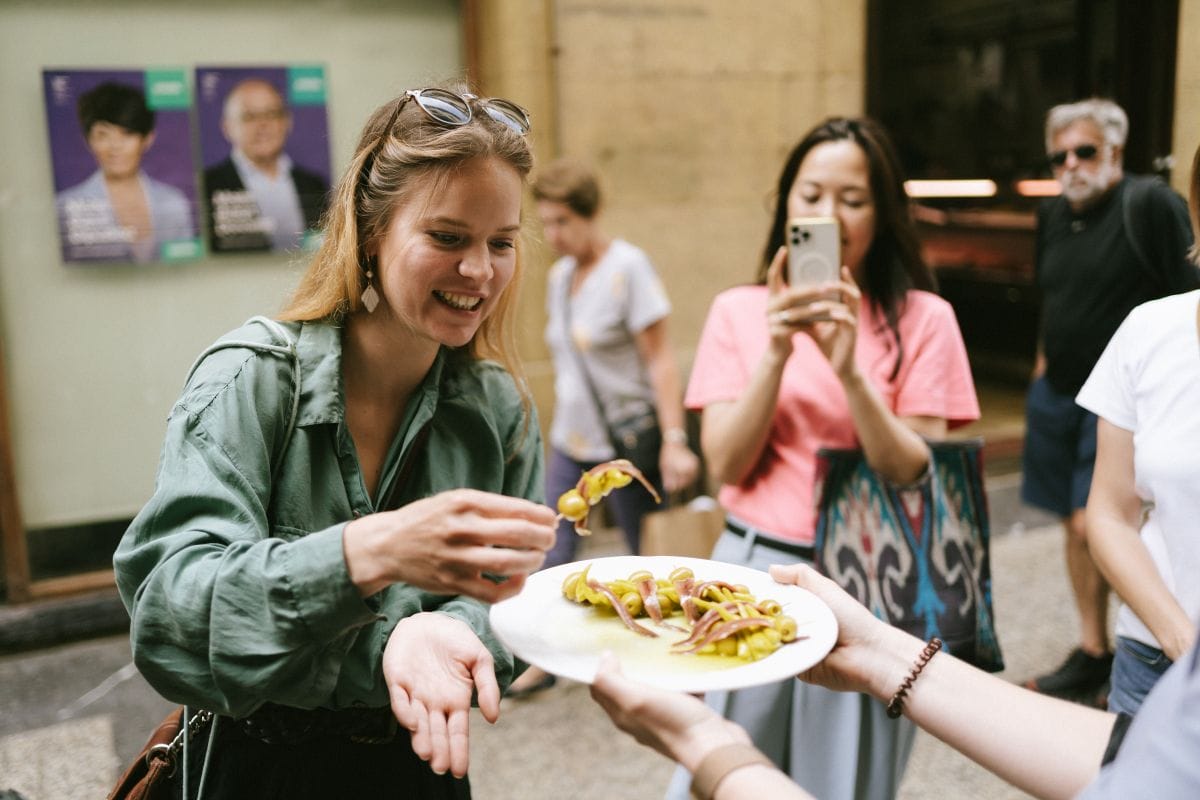
Key Differences Between Tapas and Pinchos
Traditional Serving Styles
- Tapas: Small portions, often free, shared with drinks.
- Pintxos: Individual bites on bread, paid for separately.
Regional Variations
South of Spain: Focus on traditional, family-run tapas bars offering hearty, simple dishes.
North of Spain: Emphasis on pinchos—more elaborate, innovative, and often gourmet options.
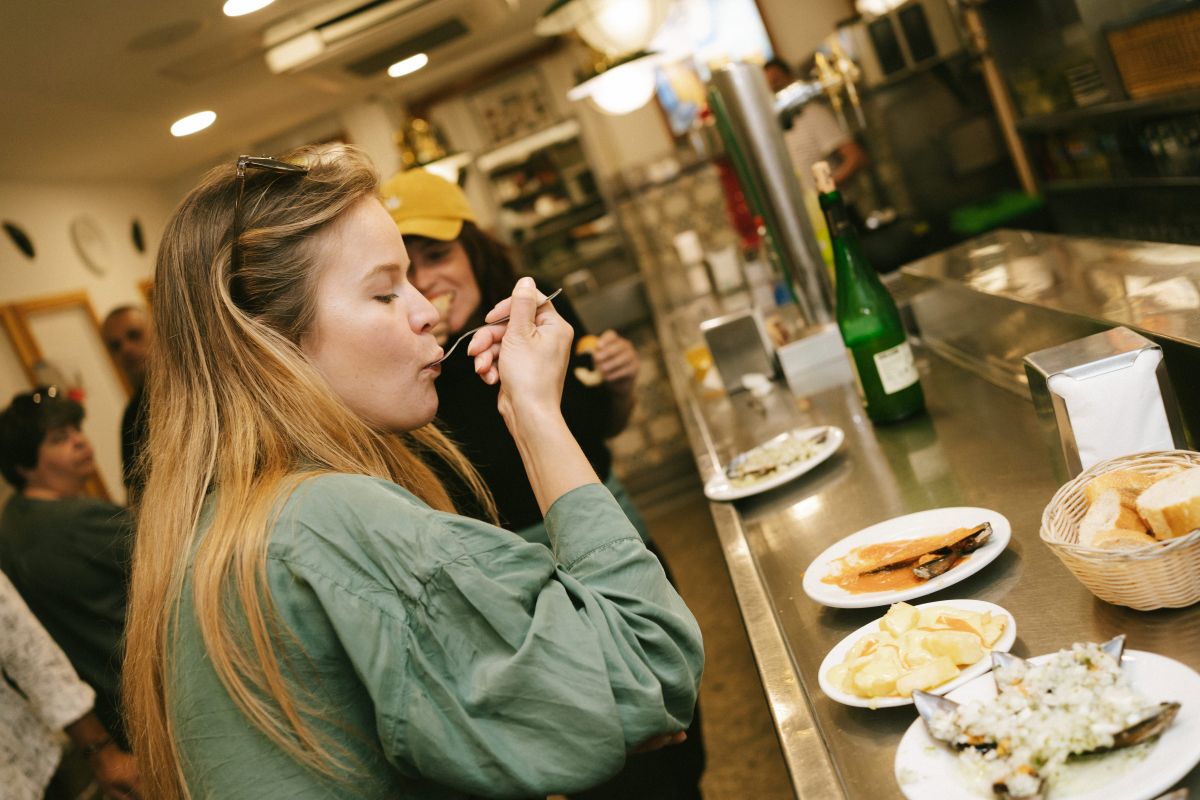
Top Tapas Bars in Seville
Casa Morales: A Historic Family-Tapas Spot
Since opening in 1850, Casa Morales has been a favorite for locals. It’s a classic, family-run place that transports you to old Spain. The atmosphere is warm, and the menu is rich in options.
A must-try here is their arro conarada—a slow-cooked, tender dish packed with flavor. The key to enjoying this spot? Check the chalkboard for specials—you’ll find dishes like this that showcase traditional Andalusian cooking.
Tips for Enjoying Tapas Like a Local
-
Arrive during quieter hours for a relaxed experience.
-
Order several dishes to taste variety.
-
Don’t hesitate to ask staff for their recommendations—they know best.
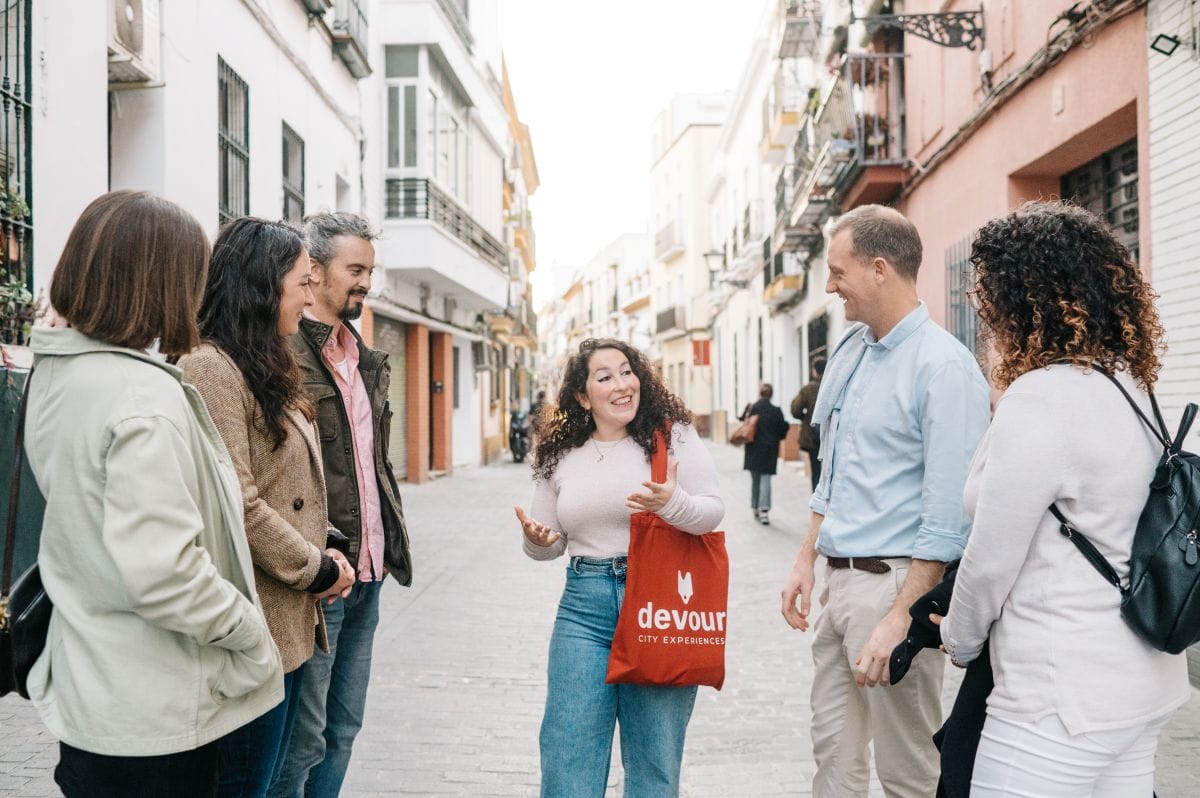
Best Pintxos Experiences in San Sebastian
Discovering Modern Pinchos: The Basque Way
San Sebastian is famous for pinchos. The city has turned this humble snack into an art form. Local bars compete to create the most eye-catching, delicious bites.
One standout is a salted cod pincho, cooked on charcoal and topped with parsley. Salted cod is a marine staple for Basque seafarers—it’s a dish loaded with history and flavor. The searing process enhances the taste, making it a favorite among visitors and locals alike.
Notable Pinchos Bars to Visit
-
Bar Txuleta: Traditional Basque cuisine and seasonal produce. They have a wide variety of fish and meat all perfectly cooked Basque style.
-
Bar Sport: Famous for grilled meats—try their grilled beef seasoned simply with salt and pepper. It’s a simple yet flavorful example of Basque pinchos.

Insider Advice
Look for pintxos with vibrant presentation, fresh ingredients, and creative pairings. They often tell their own story—sometimes combining traditional elements with modern flair. When it comes to pintxos vs tapas, this artistry in presentation is one of the clearest distinctions.
Authentic Local Experiences Off the Tourist Trail- Hidden Gems: Small, Family-Run Bars
Some of the best bites are in tiny, tucked-away places away from crowded tourist areas. For example, Taberna Avoil in Seville has been run by the same family since 1904. Their orange wine and chicherón—slow-roasted pork belly sliced thin—are local secrets worth seeking out.
How to Find Hidden Bars
-
Ask locals for their favorite spots.
-
Wander through neighborhoods near main attractions for authentic charm.
-
Explore side streets, especially in older districts.
Join a Food Tour
If you are traveling to Spain and you are curious to taste first hand the difference between Pintxos vs Tapas, we have the perfect food tour mapped out for you.
Join the Tapas and traditions of Seville food tour to taste authentic tapas, and learn about the traditions of the South of Spain.
If you are taveling north our Pitxos and wine tour in San Sebastian is the perfect way to dive into Pintxos and understand the regional differences that exist across the country.

Tapas and pitxos each tell their own story about Spanish food culture. Tapas offer a relaxed, communal experience—easygoing and packed with variety. Pintxos, on the other hand, bring a creative, often gourmet touch to small bites, showcasing regional pride and culinary innovation.
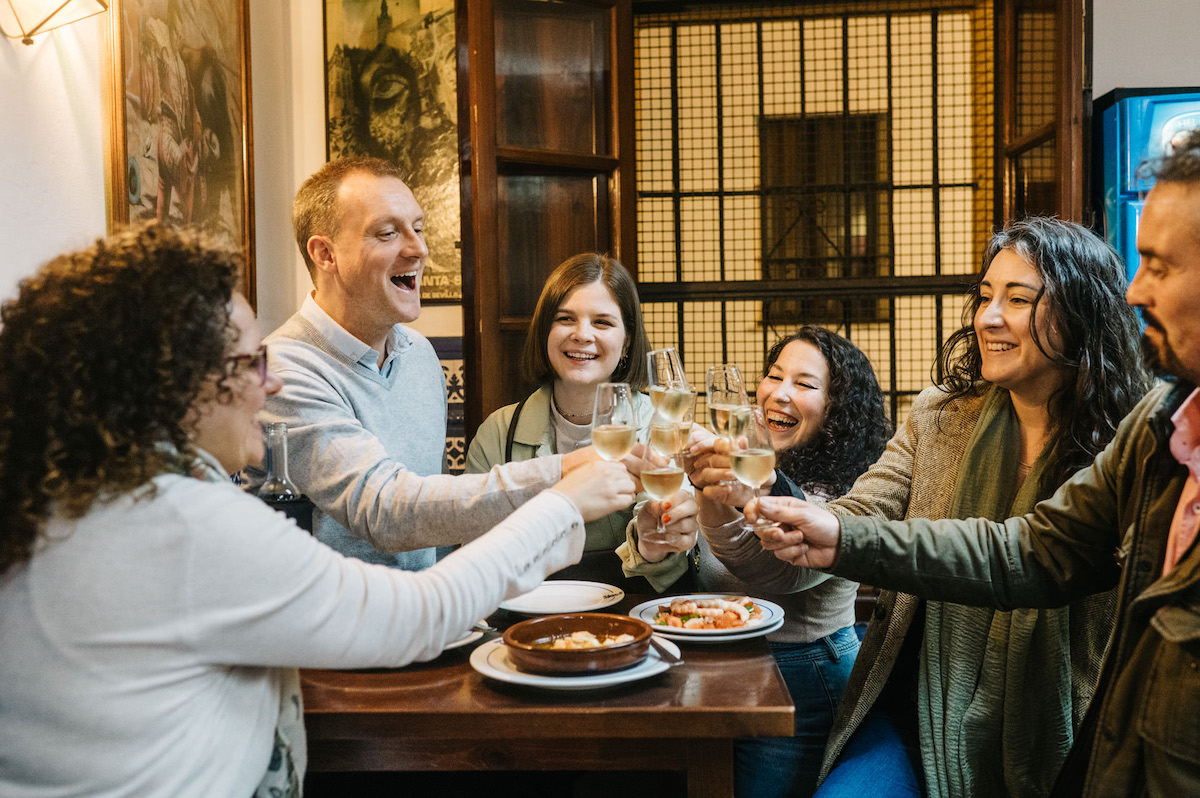
FAQ
What is the difference between pintxos vs tapas?
The difference between pintxos vs tapas lies mainly in presentation, regional origin, and how they’re served. Tapas are common in southern Spain and are often served as small shared plates, sometimes complimentary with a drink. Pintxos, on the other hand, originate in northern Spain—especially the Basque Country—and are typically individual portions served on bread, held together with a toothpick. While tapas encourage communal eating, pintxos focus on artistic presentation and bold, gourmet flavors.
Where can I try authentic pintxos vs tapas in Spain?
Where you can try authentic pintxos vs tapas in Spain depends on the region you visit. For traditional tapas, head to cities like Seville or Granada, where you’ll find bustling bars serving classic bites like jamón, patatas bravas, and local cheeses. To experience true pintxos, visit San Sebastian or Bilbao, where bars showcase beautifully crafted bites on bread, often blending modern and traditional ingredients. Each city offers a unique perspective on Spanish food culture.
Trying both styles gives a full picture of Spain’s rich food traditions. Whether in Seville or San Sebastian, explore local bars, taste authentic flavors, and make each meal an experience. You’ll leave with more than just a full stomach—you’ll carry a taste of Spain’s lively, diverse culinary soul. That’s the real heart of the pintxos vs tapas experience—understanding how both reflect the spirit of their regions.


